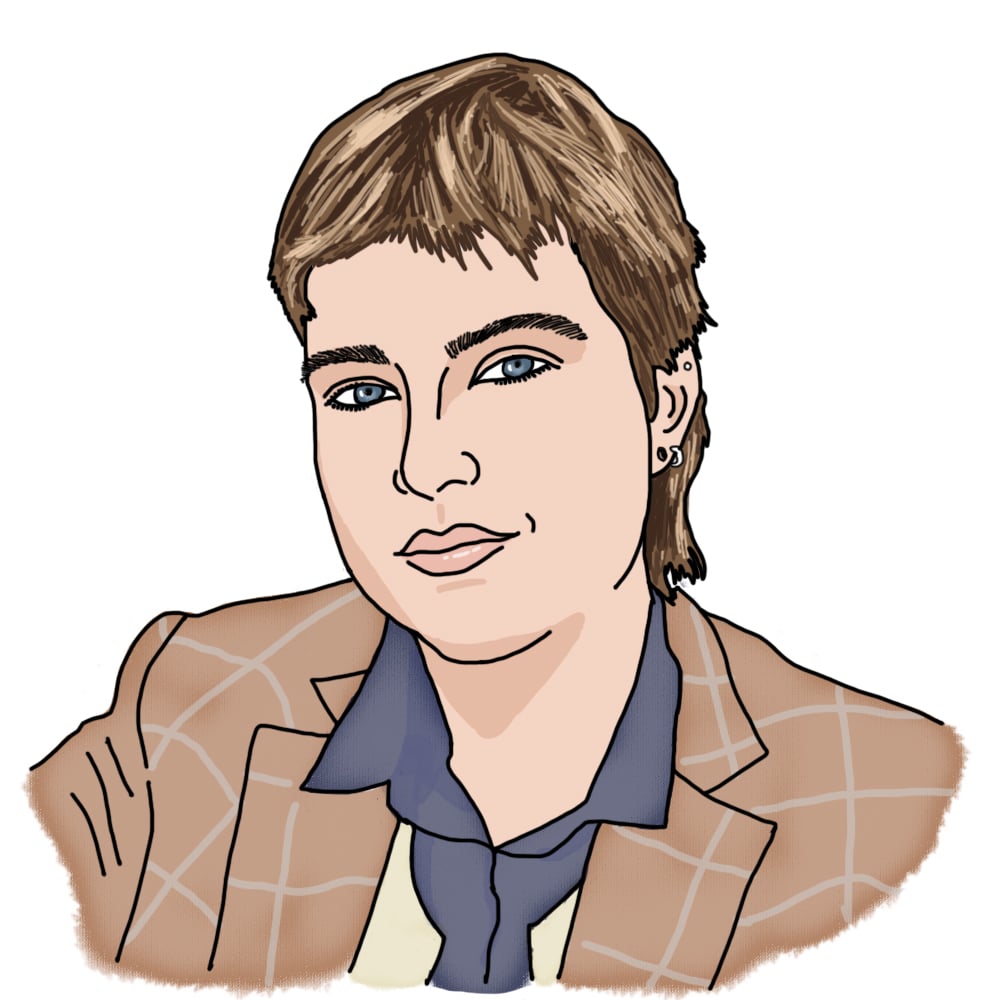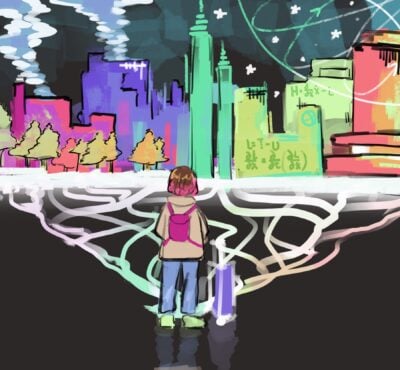
IAP thoughts by Gosha G. '24
two weeks late, but with an illustration!
I moved to campus this past weekend! It’s super exciting! I will probably write a post about it, but this is not that post. Instead, this is an IAP post: what I did, what I thought. Which was a lot, on both counts, because my IAP was… very packed. I knew from the beginning that I had overcommitted myself, a little bit, and yet I went through with it anyway. Also, read to the end for a really special surprise :)
Things I originally wanted to do during IAP:
- A micro-internship at a civil engineering consulting firm, Transsolar
- A physics class, 8.223: Advanced Classical Mechanics
- Study for the biology and chemistry ASE’s
- Go out into the city and vibe, visit a ton of museums
- Clean my room and finally sell all my extra clothing
Things I actually had time for during IAP: the micro-internship and the class.
But even then, “having time” is a bit of a stretch, because I’m still catching up on the lectures for 8.223 as I write this. (though I did hand in all the psets on time! go me!) I quickly gave up on the ASE’s, figuring I would be better off just taking the classes on P/NR later.01 my year is allowed take up to 4 classes of choice on a pass/no record grading scale at any point after our first semester And given that I was quarantining at home for like half of January after coming back from Russia in the beginning of the month, it’s not like I had much opportunity to go out. Also it’s cold. And we’re in a pandemic. As for cleaning my room… the class and internship took up a lot of time, okay?
Anyway, to the good stuff. 02 meaning, the actual things that ate up my life for a month 8.223 was a very lovely class. I wouldn’t say it blew my mind, probably because I had already been exposed to these sorts of problems before,03 I took a similar class in high school by cross registering, which was honestly a mistake to do back then but it had lots of interesting problems with cool applications and difficult math that led to satisfying conclusions. In other words, all the things I love about physics wrapped up and tied with a ribbon. I also really appreciated the way it was taught: the professor04 Michael Williams pre-recorded lectures and posted them the day before they were “due.” Then, each day, he would hold a sort of q&a session where he would answer questions and clarify concepts from the recording. This was followed by a recitation with one of the TAs. Though I usually didn’t have time to go to these live sessions, but the recordings were always posted afterwards, which was super helpful.
Now, for the star of my IAP: my micro-internship. I’ll be honest, I applied to this on a bit of a whim. I was sitting in a café in St. Petersburg, scrolling through Handshake out of curiosity and procrastination, when I saw the listing. It seemed perfect: all of the things and fields I wanted to learn more about, coupled with some of the things I already had experience with. If you remember my very first post, you’ll recall that I made a list of all the different topic areas I found exciting. Well, this internship seemed perfectly situated at the intersection of architecture, civil engineering, design, and climate studies.
Transsolar is an engineering company, for the most part. But the work they do is more about consulting: they help architects make decisions about how to make their building designs greener and lower their carbon footprint, through adjustments to things like the insulation, ventilation, or even just the shape of the façade. In the month that I spent there, I got to see and contribute to so many cool projects, from cold-climate museums to developments in the middle of the desert. I spent a lot of time just researching information for various teams at the company, so I got to learn a lot about cool techniques for green construction.05 and somehow about the geography of Canada, I actually know all the provinces now I feel like I really got a deep look into a new field of work and thought, which is exactly what I wanted.
Just as importantly, this micro-internship was a totally new experience for me, logistically. I had never before worked in industry, or in a solid 9 to 5 time block. I’ve broadly decided that since I can’t figure out what I want to do with my life, I’m going to try as much as possible while I have the opportunity.06 and boy does MIT give me a lot of opportunities I’m trying to get a sense of what it would feel like to pursue different careers, and maybe have some fun along the way. Working this internship not only gave me a perspective into a potential career, but it also made me realize what sorts of things I should even be thinking about when thinking about a career: the size of the company (if I work at a company), the team dynamics, the style of the work (project-based? client-oriented?). Somehow, it both helped me understand what I want a little better, while also leaving me with broader career-searching horizons than before.
In terms of particular content, though, my experience at Transsolar has left me thinking more deeply about climate change. It’s not that I’ve never thought about before; I have, quite a bit. I follow the news on climate change, I have opinions about policies, I worry about the future of the planet. I’ve read textbooks on atmospheric science, I’ve done research on weather and the effects of global warming. And that’s just it: my focus has been on the science side of it. The science side makes sense. Actions lead to consequences, small effects combine and amplify each other, the laws of physics govern everything in a way that we mostly understand, even if we have trouble modeling and predicting some details. During my micro-internship, though, I had a different sort of problem to tackle. Given a particular building construction plan, how can the decisions made by the owner and architect be placed in a particular climate change context? Is there a way to illustrate the ambitiousness of their carbon-saving design choices by tying those choices to a specific global warming scenario? Trying to answer this question led me down a rabbit hole of understanding how we make predictions about the societal effects of climate change and the efficacies of measures to combat it. I spent hours sorting through documents, reading reports, trying to keep track of assumptions and consequences. The reality is, all of it is so complicated and frustrating and uncertain. There are so many moving parts, and every part affects the other. It feels like a great big puzzle, and one where I can’t ever see all the pieces at once. It feels like a challenge. I’m intrigued, for lack of a better word?

thank you to my friend Penny B. ’24 for this beautiful illustration!! she’s one quarter of @big_dijkstra_energy on instagram, check them out!
Even though my micro-internship is over, I feel like I’m just getting started with thinking about climate change in a more holistic way. I have this urge to understand.07 I also have this urge to read the latest IPCC reports cover to cover, but I definitely won’t actually have time for that What I’m trying to understand, I’m not actually sure. I’ll keep you updated, maybe.
- my year is allowed take up to 4 classes of choice on a pass/no record grading scale at any point after our first semester back to text ↑
- meaning, the actual things that ate up my life for a month back to text ↑
- I took a similar class in high school by cross registering, which was honestly a mistake to do back then back to text ↑
- Michael Williams back to text ↑
- and somehow about the geography of Canada, I actually know all the provinces now back to text ↑
- and boy does MIT give me a lot of opportunities back to text ↑
- I also have this urge to read the latest IPCC reports cover to cover, but I definitely won’t actually have time for that back to text ↑